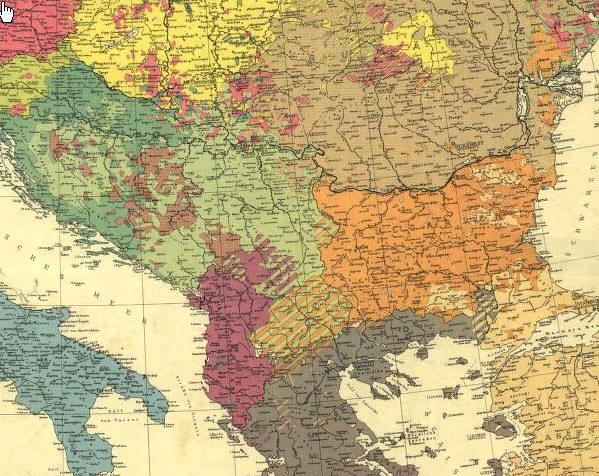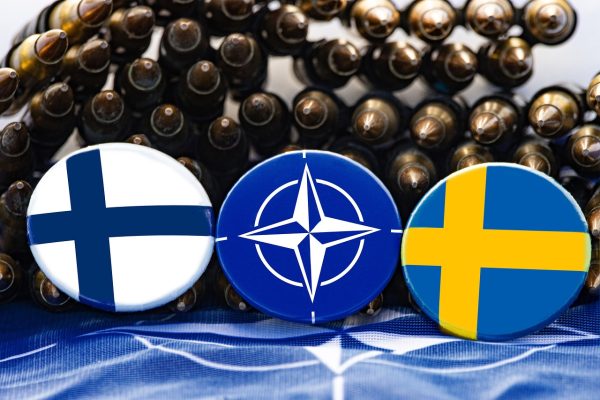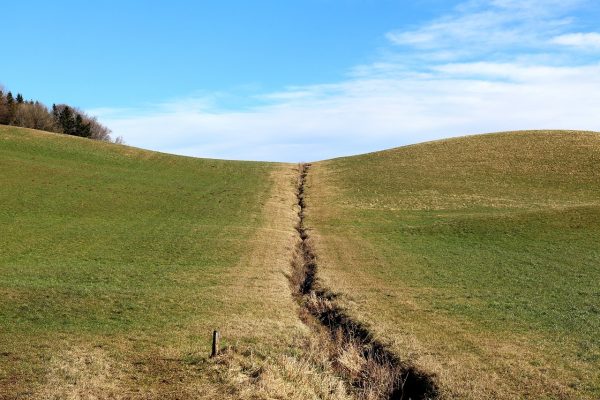South Slav Sentiments: Bulgaria and Serbia

The Balkans are a hotbed of religious and ethnic tensions which boiled over in the 1990s. However, that was hardly the first time. How an area became so diverse and intolerant, and then less diverse due to ethnic cleansing and refugees from wars, is a complicated issue. How different groups, who despite a few important differences, share a history and have very similar cultures have hated each other, can be explained historically. The first conflicts originated between the Bulgarians and Serbians.
Origins in the Balkans
The Serbs and Bulgars were nomadic peoples who settled in and around their current location around the same time, with Serbs settling in Southwest Serbia around 610 and the Bulgarians settling around 680. The Serb were invited to settle by the Eastern Roman Emperor Heraclius and were lead by the unknown prince referred to as the Unknown Archon. They were Christianized and used as mercenaries. The Bulgarians were a Turkic people who were located in modern day South Eastern Ukraine. Taking advantage of the Eastern Roman struggles with the Arabs and Lombards, they invaded the richer Roman lands, defeated them and settled a large portion of modern day Bulgaria and Thrace (modern day north eastern Greece and European Turkey). While doing so they subjugated the Serbs in modern day Bulgaria, and the Romanian people of Wallachia and Moldova. However, 200 years after dominating the Serbs, the Bulgars came to adopt southern slavic culture and Orthodox Christianity of Constantinople with the Serbs. The Serbs and Bulgars both adopted the Cyrillic alphabet in 863 after Saint Cyril, of the Eastern Romans, attempted to convert the Moravians (modern day Eastern Czechs). They failed, but were invited by the Bulgar ruler Boris I. The Cyrillic Alphabet was based on the Greek alphabet and was useful for translating religious texts in order to strengthen the Church for both the Serbs and Bulgars.
Rise, Fall and Re-rise of the Bulgarian Empire and the Serbs
The Bulgars conquered the remaining Serbs around 927, but this only lasted for a short while. The Bulgars faced Hungarian invasions from the north and Turkic invasions to the east. Losing territory of Wallachia and Moldova, the weakened Bulgar empire was conquered by the Romans from 1001 to 1017, along with the Serbs. While the conquest was brutal, both groups were given a certain degree of self rule and, despite a few rebellions, they remained reasonably content peoples under the rule of the Romans. The real conflict emerged with the decline of the Eastern Roman Empire. In 1180, the Roman emperor Manuel I Komnenos died, and the succession crisis which emerged allowed the Serbian ruler Stefan Nemanja to declare independence. To prevent the Romans from retaking Serbia, Nemanja allowed the crusaders of the Third Crusade, under the leadership of Frederick Barbarossa, to pass to through Serbia to reach their crusading goal. However, Nemanja also wanted to form an alliance with Barbarossa, who viewed the Romans with suspicion, to attack them, However, Barbarossa rejected it and wanted to complete his crusading goal, which needed Roman transport from Constantinople to Syria. The Romans raided the Serbs, but under Nemanja, the Serbs remained strong and forced the Romans to recognize their independence in 1190. In 1187, Peter and Asan, two Vlach (southern Romanian) chieftains requested grants of villages from the Roman emperor Isaac II Angelos, who promptly turned them down, and his uncle slapped Asan for being too demanding. Enraged, Peter, and Asan returned to their home and seeking revenge, instigated a rebellion among the Vlachs, Bulgarians and Serbs on the basis of the Cult of St Demetrius. The Cult of St Demetrius was based on the military saint Demetrius who was supposed to protect the city of Thessaloniki as is patron saint from harm. This was dashed in 1185 with the Normans taking the city, Peter and Asan used this to prove that St Demetrius abandoned the city, to instead guide the Vlachs, Serbs and Bulgarians to freedom from Roman rule, as all three peoples followed the Cult of St Demetrius. This lead to a 15 year rebellion where the Romans suffering defeat after defeat, and were forced to recognize Bulgarian independence in 1202 under the leadership of Peter and Asan’s youngest brother, Joannista/Kaloyan Asen. This would be known as the 2nd Bulgarian Empire, which had its Vlach vassals.
Conflicts Between the Serbian and Bulgarian Empires
The Serbs and Bulgarians while both rebelling from the Romans, had conflicts over the region of Macedonia, in modern day Macedonia. The region in a nutshell had Bulgarians in the countryside and Serbs along rivers and in major towns/cities. From 1214 to 1396, the Bulgarian and Serbian empires fought over the disputed lands. The Bulgarians lost most of their Serbian lands to Hungary in 1211 and faced numerous conflicts with the Catholic crusader state which temporarily replaced the Romans, the Latin Empire. The Serbs pushed South and took most of Macedonia. However, under Ivan Asen II the Bulgarians rebounded in the 1230s and took the modern northern and southern Serbia, including Macedonia. They retained their Vlach vassals and even vassalized the Eastern Roman successor state Epirus (Modern day northwestern Greece). The Serbs were not subdued and remained independent in Raska (modern day western Serbia). The Bulgarians faced threats from the north east in the form of the Mongols, who conquered most of their Vlach vassals in 1241. This weakness was exploited by the Latins who raided Southern Bulgaria, then the resurgent Romans under the Empire of Nicaea (reclaimed the title of the Roman Empire in 1261), who retook Thrace, Thessaloniki, and their vassal Epirus in the 1250s. The Bulgarian Empire remained somewhat stable until 1277 with mounting Mongol raids, which caused the Bulgarian empire to destabilize, with the Uprising of Ivaylo. A north eastern Bulgarian peasant named Ivaylo (nicknamed Bardovka meaning Lettuce) led an uprising against the unpopular tsar Constantine Tikh, who did little to combat the Mongols. Ivaylo personally killed Tikh and was crowned tsar in 1279. The Romans in order to gain influence in Bulgaria supported Ivan Asen III to the throne, however, George Terter I was crowned by the nobles in the capital Tarnovo.
Fall of Serbia and Bulgaria
Ivan Asen III and Ivaylo were both forced into exile, where they both went into the Mongol successor state the Golden Horde in order to gain support for the throne of Bulgaria. Ivaylo and Ivan were at the same dinner and Ivaylo was murdered, but still Ivan wasn’t able to gain support from the Golden Horde. During this civil war the Serbs and Romans seized much of Bulgarian lands, with the Serbs taking Macedonia.Terter ruled reasonably well until 1292 when he was overthrown by Smilets. Terter’s son in law Chaka overthrew Smilets in 1299 with the help of Svetoslav, who in turn overthrew Chaka and executed him in 1300. The 8 year period of succession crisis weakened Bulgaria, which lost much of its Serbian lands by 1300. The Bulgarians continued to lose small chunks of territory to the Romans and Serbs and this weakness had them lose their Vlach vassal to the Hungarians in 1321. By 1356 the Bulgarian empire split into Vidin, Tarnovo and Dobruja. The Serbs, intervening in 1347 in a Roman civil war gained most of Northern Greece under the leadership of Dušan from the Romans, while the Bulgarians were in a weak position. In 1356 the Romans lost Kallipolis (Gallipoli) to the Ottoman Turks, who used it as a staging point to invade the Balkans. The Bulgarians would continue to fight against the Ottomans, receiving aid from the west in the form of the crusade in 1394, which was met with little enthusiasm. The Bulgarians and crusaders were defeated in 1396 at the Battle of Nicopolis, which ended an independent Bulgaria. The Serbs also fell to the Ottomans, with the Battle of Kosovo in 1389 leading to a unstable Serbia which became dependent on Hungary. Despite Hungarian protection, the Serbs fell in 1540 to the Ottomans after the Ottomans successfully took Belgrade.
Rebelling from the Ottomans
The Ottomans while tolerant, did oppress the Southern Slavs and the Greeks, who shared a similar culture and rebelled together numerous times. The Serbs revolted consistently from 1812 to 1815, which resulted in a semi-independent Serbian state. The Greeks rebelled and successfully established an independent Greece in 1832. Montenegro, a Serbian state was established in 1852. In 1877, a combination of a revolt in Bosnia and the Ottoman war with Montenegro resulted in the Russo-Turkish War of 1877, in which the Russians wanted to protect its Slavic brethren and extend its influence in the Balkans. The war was a decisive Russian victory in which Romania, Bulgaria and Serbia gained independence in the Treaty of San Stefano. However, the other great European powers feared increased Russian power in the Balkans, and forced Russia to give up most of the progress made. Romania and Serbia remained independent, but Bulgaria was reduced in size, split in two and became only semi-independent. Despite fighting in a war together, old hatreds made the Serbs and Bulgarians suspicious of each other, as they wanted the same Ottoman land, which had both Serb and Bulgarian peoples. This resulted in the Serbo-Bulgarian war in 1885, when the two parts of Bulgaria unified and declared independence from the Ottomans. Serbia, with encouragement of Austria, declared war on Bulgaria and marched towards the capital. However, the Serbs were badly defeated in the Battles of Slivnitsa and Vidin, and the Bulgarian independence and unification was recognized by the Great Powers.
The Balkan Wars, WWI and WWII
After the Italo-Ottoman War in 1912, the Ottoman Empire appeared weak to its Balkan neighbors. Greece, Bulgaria, Serbia and Montenegro formed the Balkan League against the Ottoman Empire. The subsequent First Balkan War resulted in a decisive Balkan League victory against the Ottoman Empire, which in the Treaty of London took most of its Balkan land away except for Gallipoli and Constantinople. However, this treaty reignited hatred between Serbia and Greece against Bulgaria. Macedonia was split between Serbia and Bulgaria, which satisfied neither party. Bulgaria also was given Thrace, which had a large Greek population, and Greece was given Thessaloniki, which Bulgaria desired. Two months after the First Balkan war, Bulgaria declared war on its former allies. Bulgaria initially advanced well into Macedonia, however, Romania and the Ottoman empire intervened, both wanting land from Bulgaria. The Treaty of Bucharest gave most of Macedonia to Serbia, most of Western Thrace to Greece, Southern Dobruja to Romania and Eastern Thrace including Adrianople(Edirne) to the Ottomans. The weakened Bulgaria wanted some way to regain its losses, and was given two choices during WWI. The Austro-Hungarian empire declared war on Serbia and WWI began. Serbia held strong against the Austro-Hungarian and German attacks, with the aid of Montenegro and allied reinforcements coming through neutral Greece. The Allies proposed to Bulgarian lands it lost to the Ottomans in the Second Balkan War and the Central power proposed Southern Dobruja from Romania, Macedonia and Eastern Serbia, and Western Thrace from Greece. The Allied campaigns in Gallipoli resulted in a stalemate and Russia faced several defeats on the Eastern Front. Despite Italy joining the Allied power in early 1915, Bulgaria was persuaded by the Central powers to join them, which they did in the October of 1915. The Bulgarians helped the Central powers occupy Serbia and Montenegro, resulting in hundreds of thousands of civilian deaths and the flight of hundreds of thousands of more Serbs by December. However the long world war tired the Bulgarian people. The Romanian front was successful but costly, and the Southern front with the Allies coming in through then neutral Greece provided a costly Southern front. Then in July of 1918, Greece officially joined the war and the combined Allied assault,including the exiled Serbian and Montenegrin armies, resulted in a Bulgarian surrender and a loss of all land gains in Serbia. The Treaty of Versailles refuted any Bulgarian claims, and had them lose several western chunks of Bulgaria to Serbia. Serbia formed Yugoslavia and while Bulgaria, Greece and Yugoslavia attempted to maintain friendlier relations, nationalism prevented this from happen. The Serbs and Greeks resented the way the Bulgarians fought alongside their historic enemies the Turks, and the Bulgarians resented further loss of land to the Serbs and Greeks.
Then in WWII, with the Italian invasion of Greece turning into a failure, Nazi Germany demanded that Bulgaria join the Axis in exchange for Yugoslav and Greek lands. The Bulgarians accepted and marched into an already defeated Yugoslavia. Then Bulgaria invaded northern Greece with German forced, helping to defeat Greece. Bulgaria continued to occupy Yugoslavia and Greece, however refused to join in the German war against the Soviet Union and maintained diplomatic relations with them. They were forced to join in the war against Great Britain and the United States by Germany, but did not fight any direct battle with the two. In 1944, after two years of defeats by the Soviets and then the US, UK and France on the western front in July, and the continued loss of land in Italy towards the allies, the German position in Europe was weakened. Romania flipped sides and joined the Soviets in the war against the Nazis, and allowed Soviet troops to march through towards Bulgaria. Bulgaria too flipped sides, abandoning its occupation of Greece and Yugoslavia in order to combat the German troops in Bulgaria. With the aid of the Soviets, the German troops were forced to retreat. However, the Soviets installed a Communist Dictatorship in Bulgaria. After the War, Bulgaria and Yugoslavian relations improved temporarily, as Yugoslavia would forgive Bulgarian participation in the war, and Yugoslavia and Bulgaria attempted to unite as they both were Southern Slavs. However, Yugoslavia’s leader refused to become a puppet of Stalin, resulting in the Tito-Stalin split. Bulgaria jumped on this opportunity and side with Stalin against Yugoslavia. Relations would remain poor during the the Communist Era of both countries as the Yugoslav republic of Macedonia increased its efforts to teach the new Macedonian language and expelled any Bulgarian teachers. With the fall of Communism in Bulgaria in 1989 and the collapse of Yugoslavia in early 1990s, cultural similarities rose to improved relations with the Serbs and Bulgarians who shared similar culture and with Serbia no longer possessing Macedonia as it became an independent nation, there was little cause for conflict. Until in 2008 when Bulgaria recognized Kosovo as an independent nation, angering Serbia which considers Kosovo a part of Serbia. Whoops.
Conclusion
While there are still nationalists in both countries angry at each other for the thousand years of conflicts, both nations maintain a friendly relationship towards each other (usually) and bask in (mostly) friendly banter over the good old days of genocide and war crimes. Because it is nothing compared to what happened between the Serbs, Bosnians and Croatians.
Source:
Michael Angold The Byzantine Empire 1025-1204: A Political History. New York, Longman Inc. 1984.











